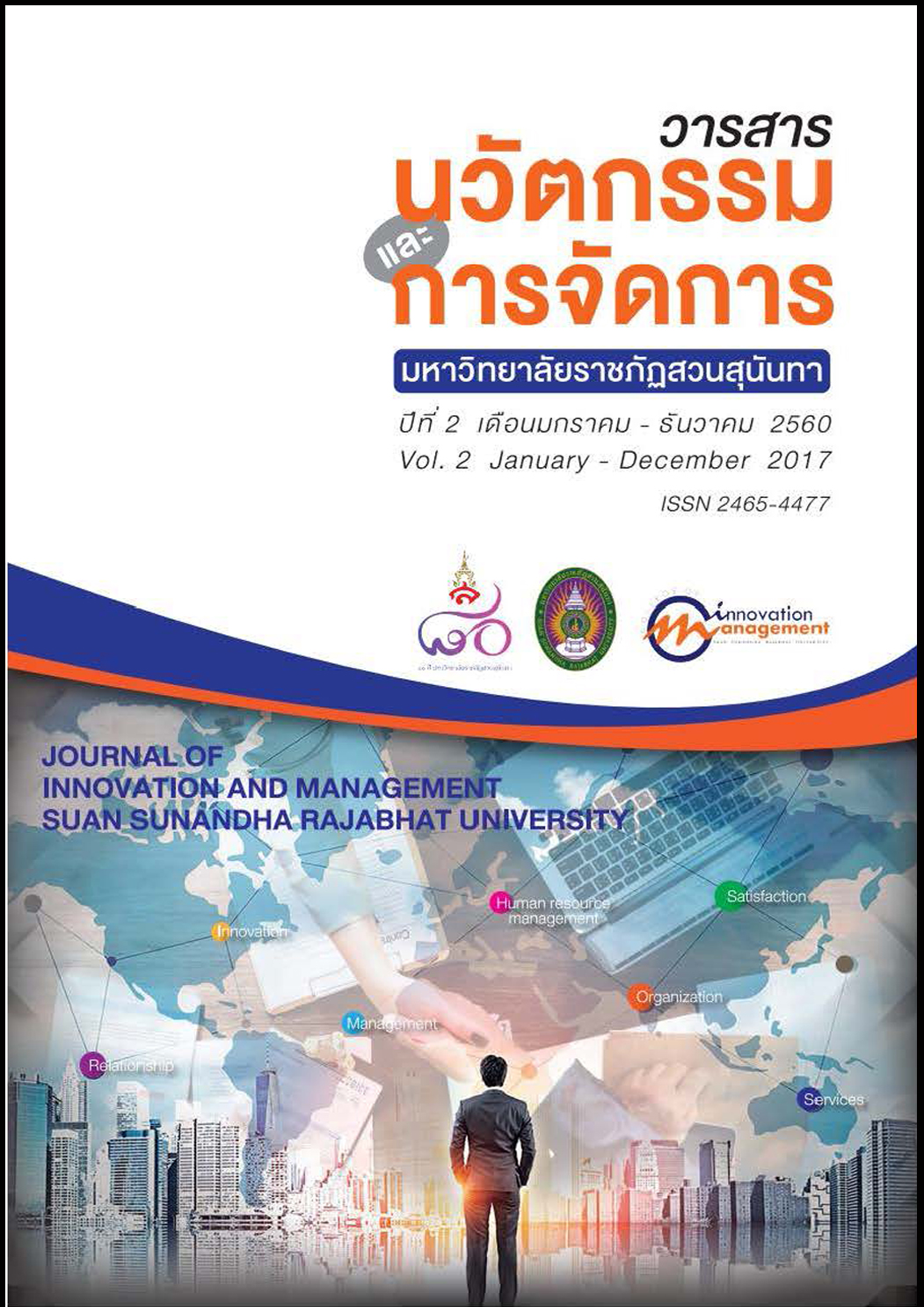The Relationship between Happiness in Working and Organizational Commitment of the Staffs: Case Study of the Head Office of Doikham Food Products Co., Ltd. (Ratchathewi)
Keywords:
Happiness in Working, Organizational Commitment, Food Industry, Human ResourcesAbstract
The purpose of this research was to study the relationship between happiness in working and organizational commitment of the staff, the head office of Doikham food products Co., Ltd. The sample of this study consisted of 105 personnel of the head office of Doikham food products Co., Ltd. The research instrument used for data collection was a questionnaire. The statistical procedures employed included frequency, percentage, mean, standard deviation and Pearson correlation. The research findings were as follows: The most of staff are female with age between 31–35 years old, Single in marital status, bachelor degree graduated, have income between 35,001 - 45,000 baht per month, have working experience between 4–6 years. The most of happiness in working is family facet and the least is income and welfare facet. The most of organizational commitment is affective facet and the least is normative facet. Finding the correlation between happiness in working and organizational commitment has the result at low and medium level. The most correlation is in medium level correlation between working conditions facet and affective facet. The least correlation in low level is a correlation between family facet and normative facet. And all facets in happiness working have correlation in low level with continuance facet.
References
2. Buapeng, P. (2011). Factors affecting organizational commitment of employees of Daikin Industries, Thailand (Limited). Independent Study of the Degree of Master of Business Administration Program. Patumthani: Rajamangala University of Technology Thanyaburi. (in Thai)
3. Cronbach, L. J. (1951). Coefficient Alpha and the Internal Structure of Tests. Psychometrika, 6, 297 334.
4. Doi Kham Food Products Company Limited. (2017). Company Profile and History. [Online]. Retrieved February 7, 2017, from: www.doikham.co.th (in Thai)
5. Limwiraphan, S. (2007). Employee Engagement to the Organization: A Case Study Rayong Purifier Public Company Limited. Independent Study of the Degree of Master of Science in Human resource and organization development. Bangkok: National Institute of Development Administration. (in Thai)
6. Maenaphothi, R. (2007). Happy Work Measuring Instruments: A Case Study of Special Level Students of Master of Science in Management Science. Independent Study of the Degree of Master of Human Resources Development Program. Bangkok: National Institute of Development Administration. (in Thai)
7. Manion, J. (2003). Jot at work: Creating a positive workplace. Journal of Nursing Administration, 33 (12), 652 655.
8. Meyer, J. P. and N. J. Allen. (1997). Commitment in the Workplace. California: Sage.
9. National Productivity Institute. (2017). People Management. [Online]. Retrieved February 15, 2017, from: http://www.ftpi.or.th/services/consult/ด้านบริหารจัดการคน people management (in Thai)
10. Ngohduan, P. (2012). Relationship between quality of work life and organizational commitment of employees of Airports of Thailand Public Company Limited, Head Office (Don Mueang). Independent Study of the Degree of Master of Business Administration Program in General Management. Patumthani: Rajamangala University of Technology Thanyaburi. (in Thai)
11. Phowittayakarn, K. (2014). Factors influencing the work happiness of factory employees Rubber wood processing industry in Mueang Yala district. Thesis of the Degree of Master of Nursing Program in Community Practice Nursing. Songkla: Prince of Songkla University. (in Thai)
12. Phongsabiripatana, Y. (2000). Work satisfaction of accounting staff and finance in the non life insurance business. Thesis of the Degree of Master of Business Education Program. Bangkok: Srinakharinwirot University. (in Thai)
13. Rapeepisan, V. (2006). Human Resource Management. Bangkok. Wichithatthakorn.
14. Warr, P. (2007). Searching for happiness at work. The Psychologist, 20(12), 726 729.






